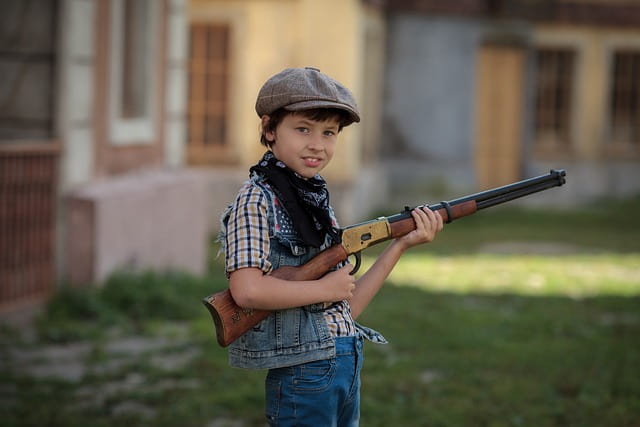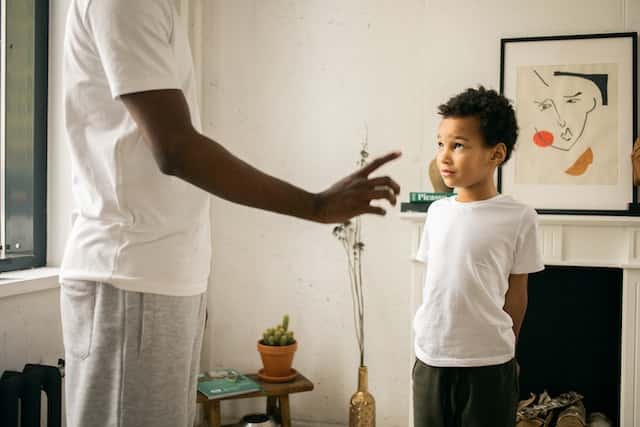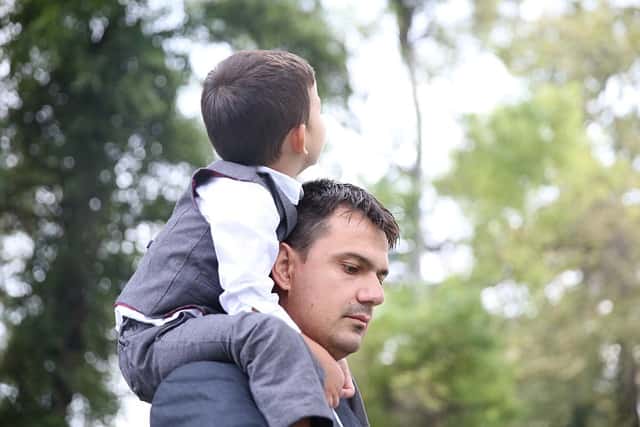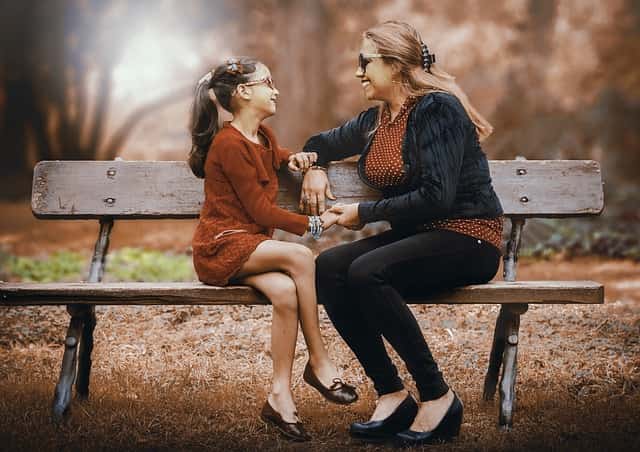
Teaching children about gun safety is a critical aspect of parenting. As much as guns are a part of our society, they can be dangerous if not handled properly. Children are naturally curious and may not understand the risks associated with guns. It is, therefore, the responsibility of parents to teach their children about gun safety to prevent accidents.
Parents can start by teaching their children that guns are not toys and should not be played with. They should explain that guns are designed to hurt or kill, and that they should only be used by responsible adults. Children should be taught to stay away from guns and to tell an adult if they see one lying around.
Additionally, parents should teach their children how to handle guns safely if they come across one. They should be instructed to never touch a gun without permission, and to always assume that a gun is loaded. Children should also be taught to keep the gun pointed in a safe direction and to never point it at another person. By instilling these basic principles, parents can help ensure that their children are safe around guns.
Why Teach Your Child About Gun Safety

Teaching children about gun safety is a crucial step in ensuring their safety and that of others around them. It is important to educate children on the dangers associated with firearms and how to handle them safely.
Prevention of Accidents
One of the main reasons to teach children about gun safety is to prevent accidents. Children are naturally curious and may be drawn to firearms if they see them. By teaching children about gun safety, they will understand the importance of not touching or playing with guns they may come across. They will also learn how to handle guns safely if they are ever in a situation where they need to do so.
Parents should ensure that guns in their homes are kept unloaded and locked away in a secure location. It is also important to keep ammunition separate from guns to prevent accidental discharge. By taking these precautions, parents can significantly reduce the risk of accidents involving firearms.
Awareness of the Risks
Another reason to teach children about gun safety is to make them aware of the risks associated with firearms. Children should understand that guns are not toys and can cause serious harm or even death if not handled properly. They should also know that they should never point a gun at anyone, even if they believe it is unloaded.
Parents should also teach their children to immediately inform an adult if they come across a gun, whether it is at home, at a friend’s house, or in a public place. This will help prevent accidents and ensure that the gun is properly handled by a responsible adult.
By teaching children about gun safety, parents can help prevent accidents and ensure that their children are aware of the risks associated with firearms. It is important to start teaching children about gun safety at a young age and to continue reinforcing these lessons as they grow older.
How to Teach Your Child About Gun Safety
Gun safety is an important topic that every parent should address with their children. Whether or not you own a firearm, it is essential that your child understands the dangers associated with guns and how to handle them safely. This section will provide parents with a few tips on how to teach their child about gun safety.
Start with the Basics
When teaching your child about gun safety, it is important to start with the basics. Explain what a gun is, how it works, and the different types of firearms that exist. It is also important to teach your child that guns are not toys and should never be played with. Make sure your child understands that guns are dangerous and can cause serious injury or death.
Explain the Dangers

Discuss the potential consequences of mishandling a firearm, including accidental discharge, injury, or death. Make sure your child understands that guns should be treated with respect and caution at all times.
Teach Them What to Do in Case of Emergency
Finally, it is important to teach your child what to do in case of an emergency involving a firearm. Make sure your child knows to leave the area immediately and call for help if they come across a gun that is not properly stored. Teach them to never touch a gun that is not theirs and to always assume that a gun is loaded. It is also important to teach your child to report any suspicious behavior involving firearms to a trusted adult.
Additional Tips for Teaching Your Child About Gun Safety

Model Safe Behavior
Children learn by example, so it’s important for parents to model safe behavior around firearms. Always follow the safety rules yourself, and make sure your child sees you doing so. If you’re going to handle a gun, do it in a safe and responsible manner, and explain what you’re doing and why. By modeling safe behavior, you’ll help your child understand the importance of gun safety.
Establish Clear Rules and Boundaries
It’s crucial to establish clear rules and boundaries around firearms with your child. Make sure your child knows that guns are not toys and should never be played with. Establish rules around handling firearms, such as always keeping the gun pointed in a safe direction, keeping your finger off the trigger until you’re ready to shoot, and never pointing a gun at someone unless it’s in self-defense. Make sure your child knows that guns should always be stored securely, out of reach of children.
Encourage Open Communication
Encourage your child to ask questions and talk openly about guns and gun safety. Make sure your child knows that they can come to you with any questions or concerns they have about firearms. By creating an open dialogue, you’ll help your child feel comfortable talking about guns and gun safety, and you’ll be able to address any misconceptions or concerns they may have.
Basics of Gun Safety
Children Under 10
As a responsible gun owner and parent, it is essential to keep firearms out of reach of children under the age of 10. This age group is too young to understand the potential dangers of guns and should never be left unsupervised around firearms. It is best to store guns in a locked cabinet or safe, and ammunition should be stored separately.
Children 10 and Above
Children over the age of 10 can begin to learn about gun safety. It is crucial to teach them the basics of firearm safety, such as never pointing a gun at anyone or anything and always treating a gun as if it were loaded. Children should also learn how to properly handle and operate a firearm, including how to load and unload the gun safely.
Teaching Strategies
When teaching children about gun safety, it is essential to use clear and concise language. Use visual aids, such as pictures or videos, to help illustrate the points you are trying to make. It is also important to set a good example by following all gun safety rules yourself. Finally, make sure your child understands the consequences of not following gun safety rules, such as injury or death.
Remember, gun safety is everyone’s responsibility, and teaching your child about gun safety is an important part of being a responsible gun owner.

Additional Safety Measures
Safe Storage
One of the most important things you can do to keep your child safe around guns is to store them securely. I always make sure to keep my guns unloaded and locked away in a safe or lockbox. I also keep the ammunition in a separate location, so there is no chance of a child accidentally loading a gun.
It’s important to choose a storage location that is both secure and inaccessible to children. I recommend using a safe or lockbox that is specifically designed to store firearms. These products often come with additional features like biometric locks or combination locks to ensure that only authorized users can access the contents.
See the exact safe I chose for my family here.
Supervision
Even if your child has been taught about gun safety, it’s important to supervise them when they are around firearms. I always make sure to keep my guns out of reach and sight of my children. If I need to handle a firearm, I always do so when my children are not around.
If you have a child who is old enough to handle firearms, it’s important to supervise them closely and make sure they are following all of the safety rules. Never leave a child alone with a firearm, even for a short period of time.
Modeling Good Behavior
Children learn by watching the adults around them, so it’s important to model good behavior when it comes to gun safety. I always make sure to handle my guns safely and follow all of the safety rules. I also talk to my children about why gun safety is important and answer any questions they may have.
If you have friends or family members who own guns, it’s important to talk to them about gun safety and make sure they are following all of the safety rules as well. Encourage them to store their firearms securely and to talk to their children about gun safety.
Here are some important gun safety tips that everyone should follow:
- Always treat every firearm as if it is loaded, even if you know it is not.
- Keep the muzzle pointed in a safe direction at all times.
- Keep your finger off the trigger until you are ready to shoot.
- Be sure of your target and what is beyond it before you shoot.
- Store firearms unloaded and locked up, with ammunition stored separately.
- Only handle firearms when you are sober and not under the influence of drugs or alcohol.
- Always wear proper ear and eye protection when shooting.
- Keep children and unauthorized persons away from firearms.
- Learn the proper way to handle and operate your firearm before using it.
Conclusion
Remember that gun safety education is an ongoing process that should be revisited regularly. Parents should continue to reinforce the importance of gun safety with their children and provide opportunities for them to practice safe gun handling techniques.
Always keep firearms locked up and out of reach of children, and never assume that a child is too young to understand the dangers of guns. By educating children about gun safety, parents can help prevent tragic accidents and keep their families safe.
Leave a Reply